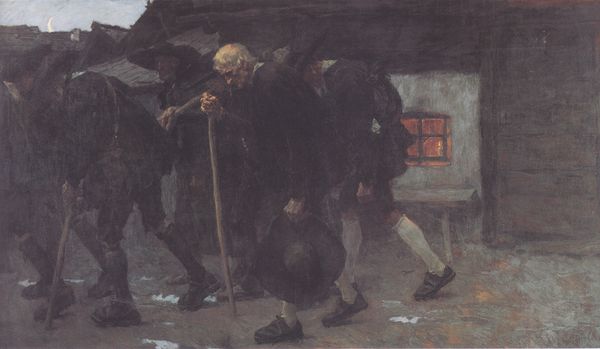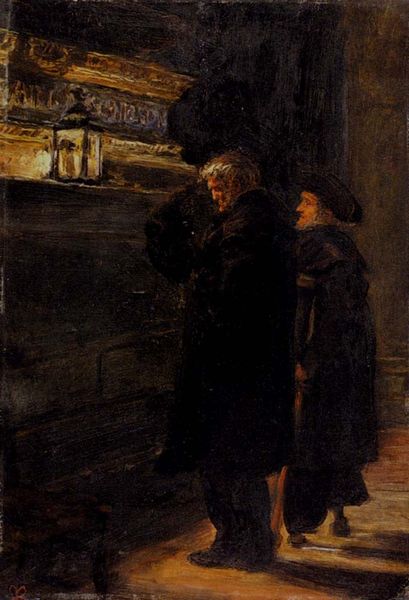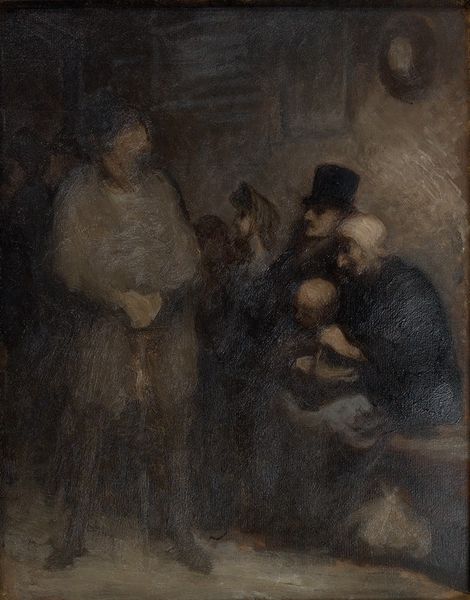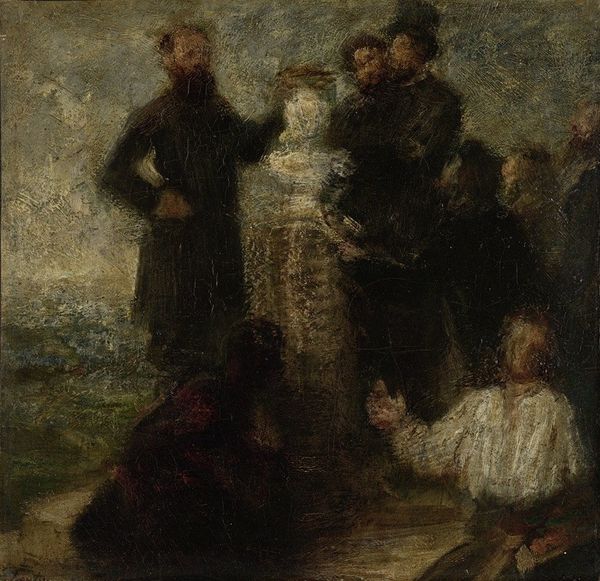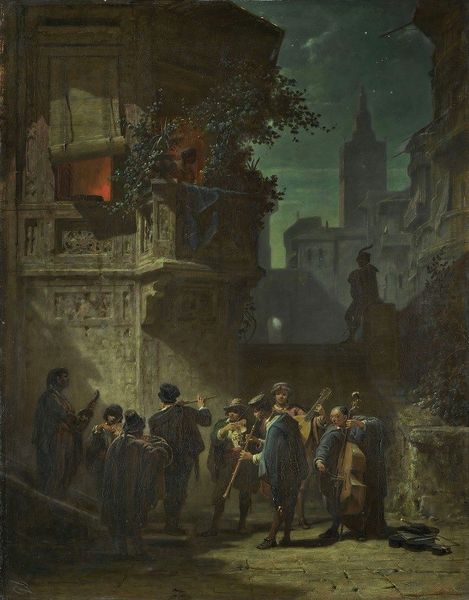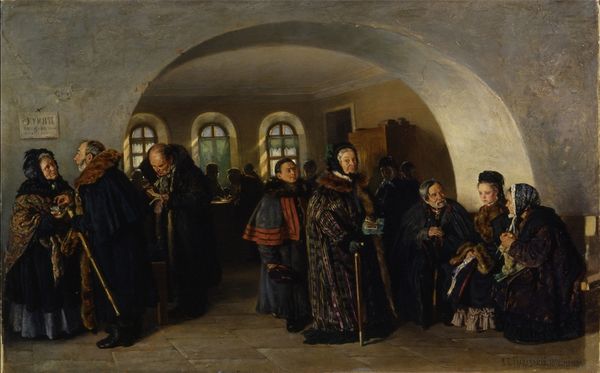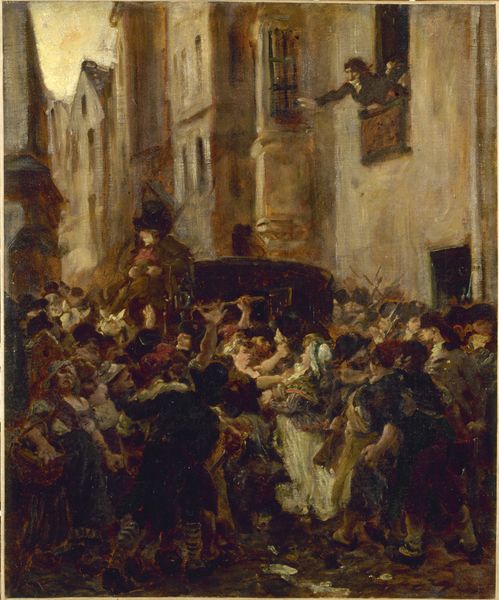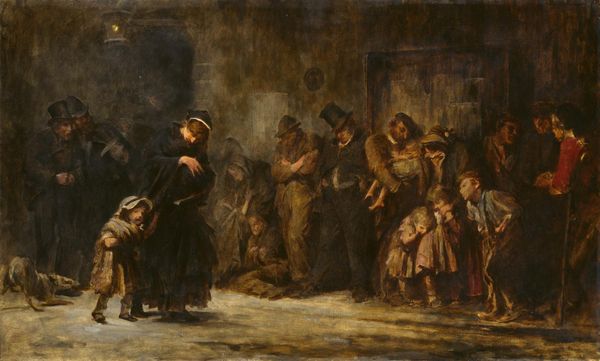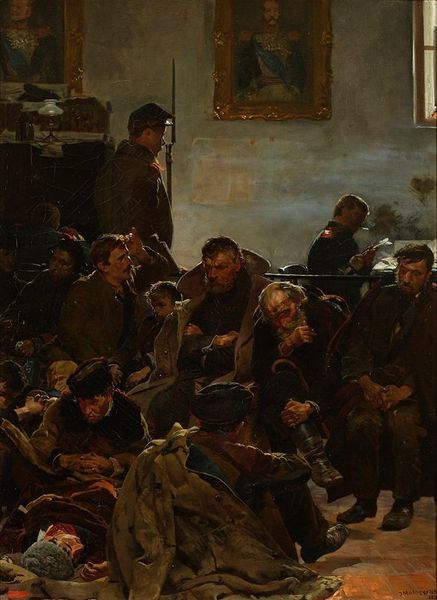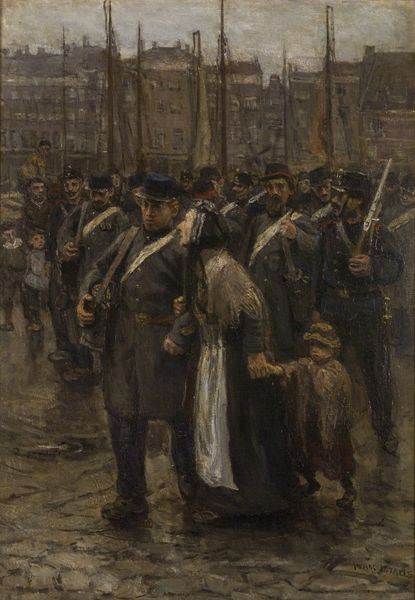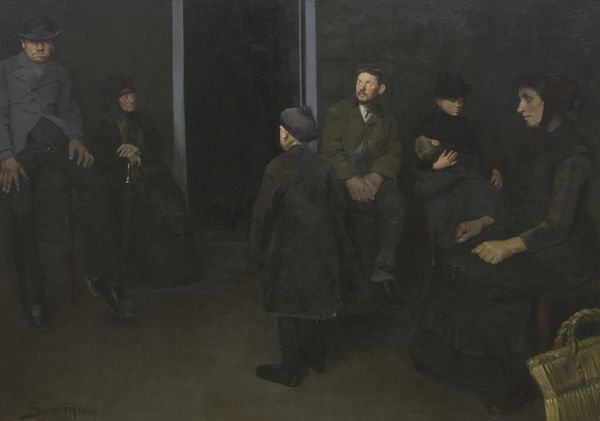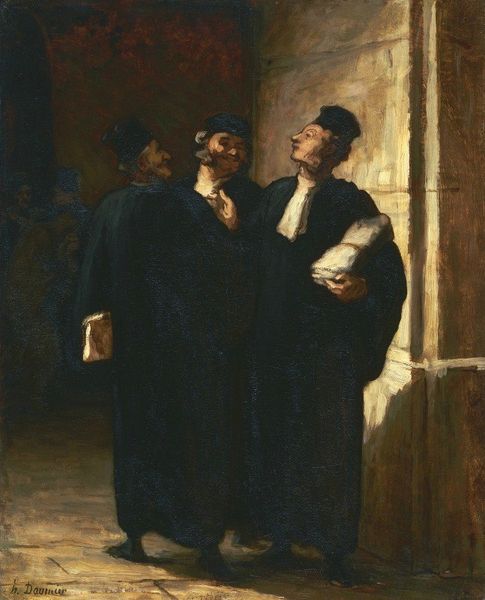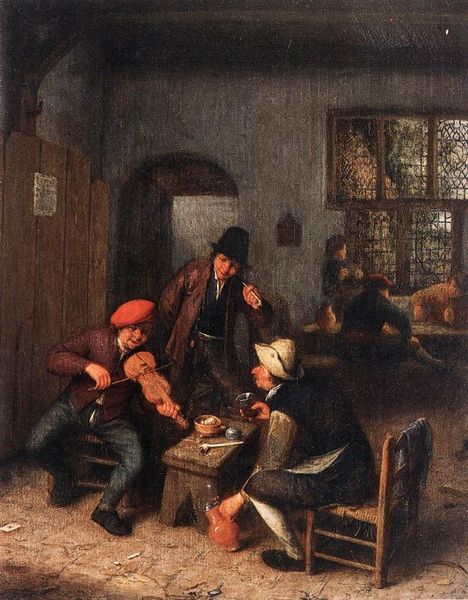
Dimensions: height 170 cm, width 125 cm, depth 11 cm
Copyright: Rijks Museum: Open Domain
Editor: Here we have Hein Burgers' oil on canvas, "A Jewish Funeral," dating from sometime in the latter half of the 19th century. It’s overwhelmingly somber, isn't it? All that dark clothing against the grimy buildings. What do you see in this piece from a historical perspective? Curator: The painting operates within a historical context rife with both societal shifts and artistic movements. Considering the rise of Realism in the latter half of the 19th century, with its commitment to portraying life as it truly was, devoid of idealization, we must also view the painting in its historical depiction of marginalized communities. What can the institutional presentation of such art achieve today? Editor: It's true. Seeing it here changes things, doesn’t it? I'm now considering how a museum's decision to display it shapes the narrative. Does it perpetuate stereotypes or foster empathy? Curator: Exactly. The painting's cultural significance is deeply tied to its representation and reception, both then and now. This is about the gaze of the viewer; how it would have been perceived in contrast to those living in the Jewish community and how different factions in society politicized that view. I am curious what your own politicized interpretation of this work could be? Editor: Well, given that anti-Semitism was virulent in Europe, particularly during this period, depicting a Jewish funeral with such... almost grotesque somberness could be interpreted as reinforcing negative stereotypes. Then again, is it truly our place to interpret artwork through an ethical lens that could only have developed so long after the painting itself? Curator: Precisely. Ethical judgements are subjective, but recognizing the potential for harm allows institutions to engage more thoughtfully. Contextualizing it is key; revealing biases rather than masking them. Editor: I see. Thanks, it really opens my eyes to the responsibility museums bear. Curator: It's a crucial consideration. Thinking critically about representation enriches the artwork, and the social role it could come to play in contemporary times.
Comments
No comments
Be the first to comment and join the conversation on the ultimate creative platform.
